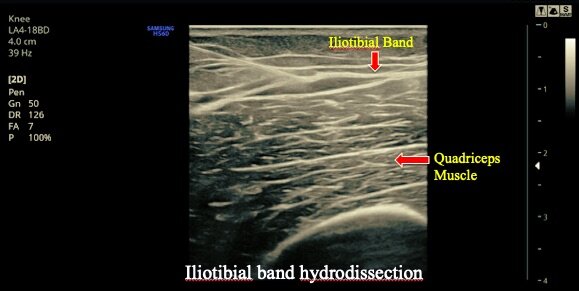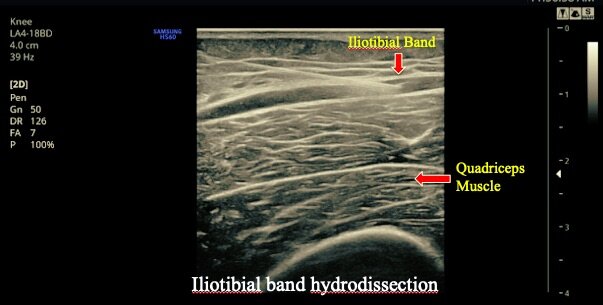Iliotibial Band Syndrome
The iliotibial band (ITB) is a thick, dense fibrous band that originates at the hip (tensor fascia lata and gluteus medius) and extends along the lateral thigh to attach below the knee.
Iliotibial band syndrome is an overuse injury usually observed in an active athletic population. Pain is located in the area of the lateral femoral epicondyle and is due to compression of structures deep to the IT band. Symptoms occur after repetitive flexion and extension of the knee, typically in a runner, cyclist, or other athlete.
Most patients are able to return to activity with non-surgical treatments including reduction in training load, stretching, and strength training.
Iliotibial Band Hydrodissection
Indications
Lateral knee pain that is refractory to standard treatments (i.e. rest, stretching, physical therapy).
An MRI or ultrasound may be performed before the procedure to rule out other potential causes of knee pain.
Ultrasound-guided hydrodissection
Hydrodissection is a technique that involves using a local anesthetic and sterile saline to reduce friction and alleviate compression by separating thick, fibrous tissue from the fascia and quadriceps muscle (vastus lateralis). Ultrasound guidance is used to visualize and accurately target the ITB.
Post-Procedure Care
There is minimal discomfort with the procedure, and patients are immediately able to return to normal daily activity.
Physical therapy may be prescribed to address underlying muscle imbalances and weakness.


